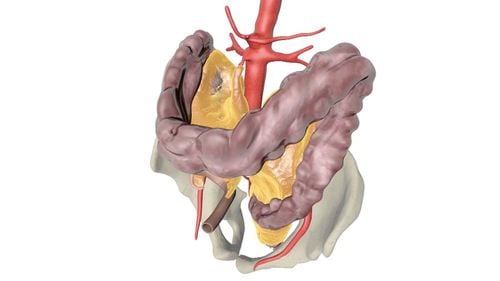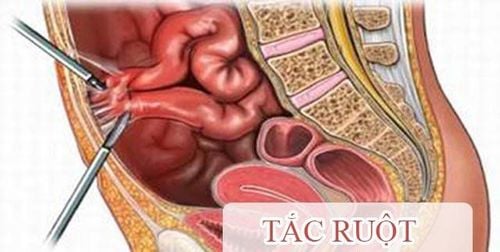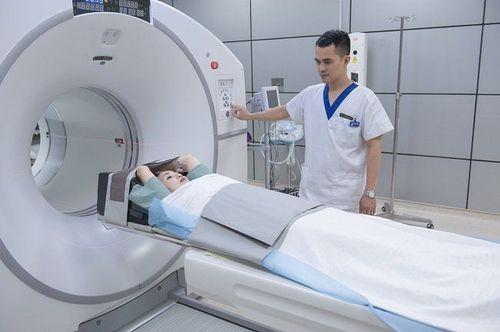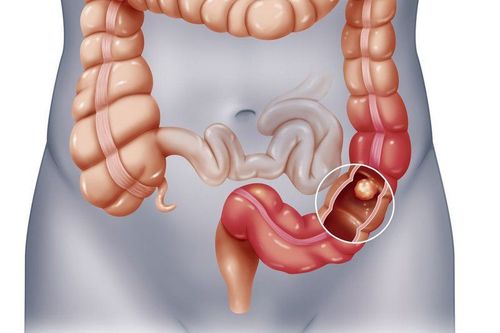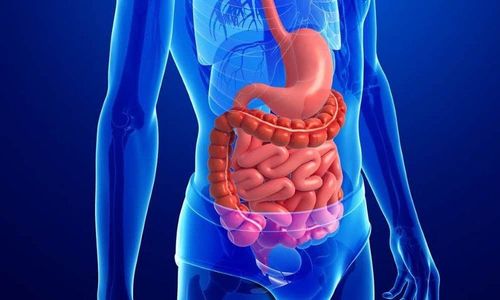This is an automatically translated article.
The article is professionally consulted by MSc, BS. Dang Manh Cuong, Department of Diagnostic Imaging, Vinmec Central Park International General HospitalComputed tomography (CT) of the small intestine with a catheter is a minimally invasive method that is more effective when looking for abnormalities in the intestinal wall. The patient will be placed an additional catheter into the duodenojejunal angle to pump water before starting the CT scan.
1. What is a catheterized small bowel computed tomography?
Small bowel computed tomography is an imaging method that uses X-rays to reconstruct images of the small intestine in the body. Catheterized small bowel computed tomography is another variation of the small bowel scan. A catheter is inserted into the small intestine to the duodenojejunal angle through the nose or mouth. Distilled water was injected into the catheter to make the small bowel loops larger than normal before simple computed tomography and contrast computed tomography were started. Computed tomography of the small intestine helps to detect tumors in the intestinal wall or from the outside pressing on the intestinal lumen, other abnormalities such as gastrointestinal bleeding, diffuse inflammation ...2. Indications/Contraindications for small bowel computed tomography in which cases?
Computed tomography of the small intestine is often used in the following cases:Tumor in the small intestine wall or tumor from the vicinity compresses causing intestinal deformity or intestinal obstruction but gastrointestinal endoscopy does not detect can now. Gastrointestinal haemorrhage with suspected small bowel etiology Chronic anemia in the elderly with no bleeding focal point found. Pathologies complicating gastrointestinal fistula Diagnosis and identification of causes of low bowel obstruction Crohn's disease inflammatory bowel disease. Detect ulcers or precancerous lesions in the small intestine As with other methods, catheterized small bowel computed tomography cannot be used in all cases. Contraindications of small bowel computed tomography include:
Pregnant women. X-rays emitted by CT scanners carry a risk of fetal malformations, so other safer imaging techniques should be considered for pregnant women when evaluating medical conditions. in the small intestine. Suspect the patient is having complete bowel obstruction. Catheterization and pumping of water through the tube dilates the intestines in this setting, which is very dangerous. The bowel above the obstruction was already dilated, adding water to the intraluminal catheter increasing the risk of bowel rupture. The patient is allergic to iodinated contrast during computed tomography. Patients with severe renal impairment have contraindications to the use of iodinated contrast agents. Cases with abnormalities that hinder catheter placement such as esophageal strictures, esophageal tumors, esophageal sphincter disorders, ... Do not try to push the tube deeper when encountering foreign objects or feeling of stiffness in the hand. on the road

Phụ nữ mang thai chống chỉ định thực hiện
3. Steps to perform a small bowel computed tomography scan
To ensure patient safety and final image quality, small bowel computed tomography should be performed according to the following correct procedures:Preparation of CT scanner Preparation of drugs, instruments and medical supplies, including contrast media, catheter lubricating solution (usually paraffin), distilled water or physiological saline, syringes, needles, catheters, gloves, cotton swabs, etc. Medical equipment used when scanning the small intestine must be kept sterile, most importantly the catheter to avoid introducing bacteria from the outside environment into the intestinal lumen. Explain and advise the patient about the steps of the small bowel computed tomography. Instruct the patient to fast about 12 hours before the time of the scan. Before entering the imaging room, it is necessary to change clothes, remove personal items such as earrings, watches, ... Pre-exam examination, ask medical history, patient history to rule out contraindications as above. . Have the patient lie supine on the imaging chair. Perform two large intravenous lines. Contrast is injected from one line, the other side is used for infusion of physiological saline. Lubricate the catheter with gel and proceed to insert the catheter under the guidance of the luminous membrane, stopping at the duodenal angle. Secure the outer end of the catheter with adhesive tape. Inject slowly about 1500ml of distilled water or physiological saline, pumping speed not more than 200ml/min. More fluid can be injected into the tube to expand the bowel to the desired level, but the total volume of water should not exceed 2000ml. Anterior non-drug computed tomography, reconstructed images from the dome of the diaphragm to the end of the pubic joint, showing the shadow of the rectum and other organs. Then inject contrast and conduct a computerized tomography procedure with drugs: spiral scan, starting about 1 minute after injection. Various pulses are selected and combined to achieve the desired result. The image obtained needs to be detailed and clear for the organs in the abdomen.

Tiêu chảy là biến chứng phổ biến sau khi chụp
4. Management of complications occurring after the scan
Complications occurring after CT scan of the small intestine can include:
Digestive disorders, the most common is diarrhea due to too much water being pumped into the intestinal lumen. The diarrhea in this case is usually not severe, is self-limited, and responds well to treatment with medication. Allergy to contrast: the most serious reaction is anaphylaxis to the drug, but it is quite rare in clinical practice. Therefore, if the patient has a history of allergy to the drug, consider not using contrast. If an accident occurs, emergency medical staff will handle it according to the protocol of the Ministry of Health. Vinmec International General Hospital examines and treats common nasopharyngeal diseases, head and neck tumors, congenital malformations of the ear, nose and throat area with the most optimal internal and surgical methods for the disease. individuals, both children and adults. Coming to Vinmec International General Hospital, patients will receive a direct, dedicated and professional examination from a team of qualified and experienced medical staff.
Before taking a job at Vinmec Central Park International Hospital from December 2017, Doctor Dang Manh Cuong has over 18 years of experience in the field of ultrasound - diagnostic imaging in Transport Hospitals. Hai Phong, MRI Department of Nguyen Tri Phuong Hospital and Diagnostic Imaging Department of Becamex International Hospital.
To register for examination and treatment at Vinmec International General Hospital, you can contact Vinmec Health System nationwide, or register online HERE
MORE
Effects of X-rays on the fetus Computed tomography - the gold standard in the diagnosis of coronary artery disease Contrast in computed tomography (CT Scan)





